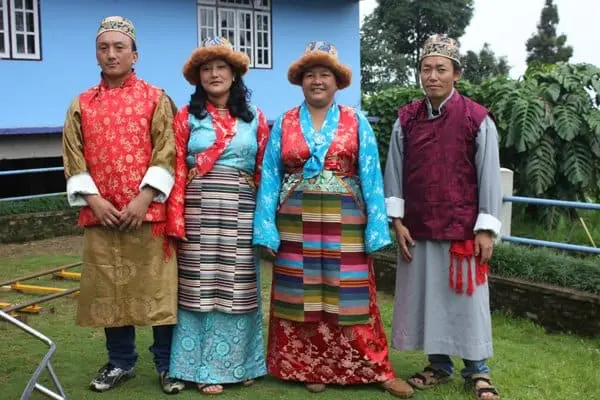Sikkim is a great place to visit! The stunning scenery, tranquil atmosphere, mouthwatering cuisine, colorful clothing, fascinating history, and graceful dances are all bonuses.
Sikkim is home to a wide variety of people, each with its own culture and set of customs.
Different from other societies, each group has its own distinctive fashion sense. The clothes people wear are a reflection of their culture and religion as well as their social standing.
All across the world, people dress in ways that display pride in their heritage and a firm adherence to local traditions. Traditional and culturally relevant clothing is highly valued in Sikkimese society because it helps individuals stand out from the crowd.
During the “Namgyal dynasty,” traditional clothing was reserved for the nobility because of the prestige it brought to the cities. The people of Sikkim now commonly wear traditional clothes as a means of expressing their pride in their shared history, culture, and traditions.
People of Sikkim can be easily identified by their marital status, social standing, and even religion thanks to their distinctive traditional dress.
Let’s learn about the Traditional Dress of Sikkim for Men and women in detail:

Traditional Dress of Sikkim for Men
Bakhu, often spelled “Kho,” is the traditional garment of Sikkim and is worn by both men and women.
It’s a long, billowy garment that fastens at the neck but is cinched in the middle with a belt of silk and cotton. The only noticeable difference between the Bakhu and the Tibetan Chuba is that the former is sleeveless.
As the country’s exposure to the West has increased, ladies there have begun pairing it with jeans for a more modern take on the traditional outfit.
The people of the Lepcha tribe are noted for the elaborate traditional clothing they wear, renowned as Thokro Dum. One of the pyjamas included in this set extends to the lower legs.
The traditional Lepcha outfit consists of the headgear known as a Shamo and the shirt known as a Yenthatse. For important events like weddings, festivals, and religious ceremonies, they also don conical hats made of bamboo or rattan.
To make these hats, skilled artisans use fine canes made from bamboo, straws, & leaves. To finish the outfit, waist belt called Dupra is placed at one shoulder and wrapped around the waist.
Men in the tribe wear Pajamas that are unusually short because of cultural significance. What this means is that the men have always lived in these damp environments.
Traditional Dress of Sikkim for Women
The traditional Lepcha clothing worn by ladies in Sikkim is created from a delicate fabric that exudes a refined femininity.
Beautiful sarees called Dumvums or Dumyams in the native language of Sikkim are worn by women of the Lepcha people.
This knee-length dress from Sikkim is as practical as it is beautiful. It’s a symbol of a woman’s worth and dignity in addition to helping her look her best. A loose-fitting blouse, also called a Tago, is worn by women with the ankle-length saree. Both the top and the saree are made up of strikingly contrasting hues.
The appearance is finished off with a belt known as Nyamrek and a head covering known as a taro.
When it comes to Nepalese ladies and their beautiful clothing, the Pharia is a standout. A variety of colours are available for this traditional garment, and it is worn by women at celebrations.
A beautiful, flowy blouse wraps the upper body, and a cloth is draped over the top. It’s secured on all four sides as well.
Various items of clothing are worn, and in some cases, extra layers are added. The result is a tremendous improvement in their appearance. The Hembari, a stylish scarf, is just one of several accessories worn with the dress. It’s worn as a belt around the hips.
Conclusion
As you can see, there is a wide range of traditional dress for both men and women in Sikkim. The goal was to pique your interest in Sikkim’s rich cultural heritage by briefing the traditional garments in the hopes that you’ll make a point of visiting this place.
Santosh Kumar is a Professional SEO and Blogger, With the help of this blog he is trying to share top 10 lists, facts, entertainment news from India and all around the world.
